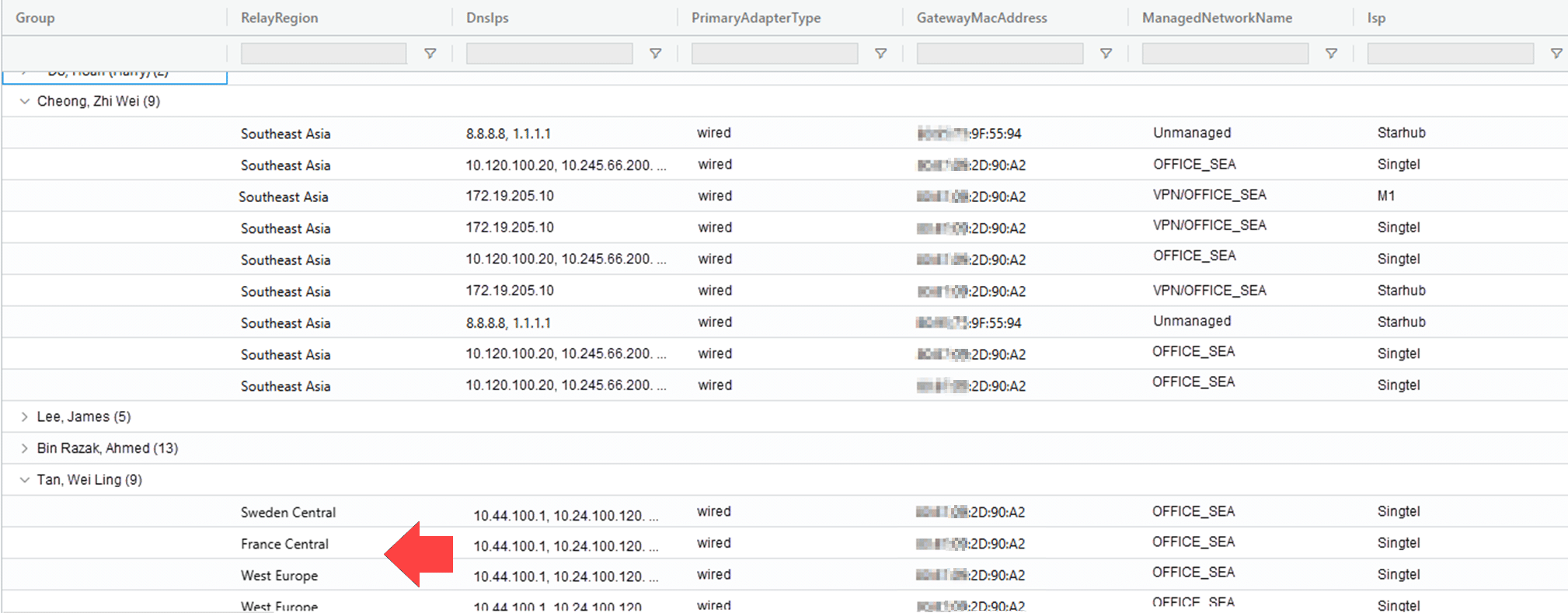This brief article highlights the importance of correct DNS configuration. Many resources explain essential considerations, but I’d like to share a recent case where TrueDEM identified multiple DNS misconfigurations for a customer based on Teams Call quality data.
Lets start with some basics:
Ideally, when you start a Teams Meeting, the local Teams client should connect to the geographically nearest Microsoft Teams media relay. After all, the distance data travels can impact call quality, especially during the substantial audio and video data exchange in a Teams call.
To find this nearest relay, the Teams client performs a lookup for worldaz.tr.teams.microsoft.com by contacting a DNS server. The specific DNS server contacted is typically determined by the user’s network connection (office, home, or VPN) and any policies configured for their group or site.
For example, the DNS server I use while working at home (in Vienna) is the one from my provider: 195.58.161.123.
Using this DNS resolves the Media Relay to the France Central Media Relay as visible in the below picture:
Doing the same exercise but redirecting it to use a DNS server from the United States, the relay will be different (in this case East US):
The region the first participant of a call joins from also determines where the call will be hosted if it is required for mixing and routing purposes. Consequently, the client’s DNS server and the resulting Teams media relay selection are critical factors for user experience.
Let’s look at an example of this.
An administrator at a globally operating enterprise using TrueDEM, noticed while investigating some issues users reported, that several users were regularly connecting to Media relays that were far from where they were geographically located. This, while other users on the same corporate network were connecting to media relays, within their geographical regions.
Using the call list in a user’s TrueDEM User Experience page, you can easily see this by adding the ‘Media Relay’ column from the hidden columns list. As is shown below, where a user from APAC was using an European Media Relay Server for two of the calls he made that week.
To take a different perspective, we aggregated the users calls based on their Location. Some Users from the APAC location, using a wired connection (PrimaryAdapterType) were pointing to far away European Relays (Sweden, France, Wets Europe,…) while others, on the same wired connections were resolving to the neareast APAC media relay.
As you see in the screenshot, TrueDEM has access to information on which Primary and Secondary DNS server were active when the user jumped on a call. Allowing you to compare users with each other in terms of settings and DNS use.
Seeing that these two users, from the same location and network were connecting to different DNS servers could only mean that somewhere a misconfiguration was in place.
Resolution
Using the data TrueDEM provided, the customer was able to discover the discrepancies and identify the misconfigurations. They corrected the DHCP settings and AD Sites and Services configuration across their global landscape to reflect the appropriate primary and secondary DNS servers which resolved the issue.
Without TrueDEM, they would not have known about the problem, which could have potentially caused Teams call quality issues as well as other DNS related issues. Having full end-to-end coverage for Microsoft Teams calls gave them the information they needed proactively and detailed.





